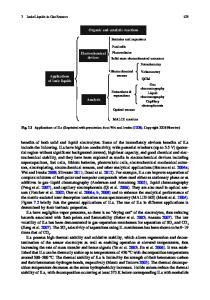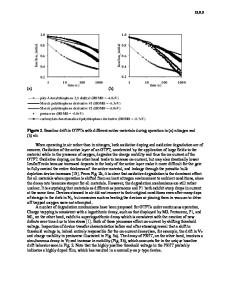Recent Advances on Graphene-Based Gas Sensors
- PDF / 1,251,337 Bytes
- 6 Pages / 612 x 792 pts (letter) Page_size
- 110 Downloads / 327 Views
HYSICAL CHEMISTRY OF NANOCLUSTERS AND NANOMATERIALS
Recent Advances on Graphene-Based Gas Sensors Jogendera, Mandeepa, and Rita Kakkara,* a
Computational Chemistry Laboratory, Department of Chemistry, University of Delhi, Delhi, 110007 India *e-mail: [email protected] Received November 20, 2019; revised February 4, 2020; accepted February 11, 2020
Abstract—Owing to its unprecedented structural, electronic and mechanical properties, graphene, a singleatomic sheet of carbon atoms, is effectively used to detect chemical species. In this work, adsorption of gaseous molecules, mainly toxic (NO2, NO, NH3, CO, CO2, HF, H2S, etc.) and volatile organic compounds (VOCs), on graphene and modified graphene (GO, rGO) has been reviewed. The gas sensing ability of graphene is enhanced by doping with heteroatoms, and functionalizing it with many groups, such as hydroxyl, epoxy, etc. Recent advances in detection of gaseous molecules by graphene and modified graphene, coupled with metal and metal oxide nanoparticles, which have high response and better sensitivity than metal and metal oxide NPs because of high surface area and increased electronic charge transfer, have also been reported. Keywords: graphene, gas, DFT, adsorption, doping, sensing DOI: 10.1134/S0036024420100167
INTRODUCTION Sensors are sophisticated devices, which are used for the sensitive detection and quantitative determination of specific molecules present in the environment. The molecules usually affect the physical, electrical and optical properties of the substrate, and the detector signal is based on these changes. The desirable properties of an excellent gas sensor are high sensitivity, robustness, good regeneration capacity and a large range of applications at low cost. In the past few decades, developments have been made to make ultrasensitive gas sensors for the effective sensing of toxic chemical species like hazardous gaseous molecules (NOx, HF, HCHO, H2S, CO, NH3, SO2, O3, and hydrocarbons) and volatile organic compounds (VOCs) which are used as solvents in many chemical reactions, for effective environmental monitoring, medical diagnosis, manufacturing of industrial goods and in the military. Solid-state gas sensors are extensively employed for sensing toxic gases because of their high sensitivity, low cost, miniature size and high adsorbing power. However, achieving a level of sensitivity up to only a single gas molecule has been beyond the reach of the solid-state devices currently in use. This may be due to the fluctuations related to the thermal motion of charges and defects, which lead to intrinsic noise. Nanosurfaces behave as sensitive gas sensors because of their large surface area and high electrical conductivity [1–3]. Graphene, a 2D nanosurface (Fig. 1), has large surface area, high electrical conductivity, thermal stability, high mechanical strength, high elasticity
with tunable band gap, quantum Hall effect and ambipolar electric field effect [4]. Because of these tremendous properties of graphene, it is mainly used for storage
Data Loading...











